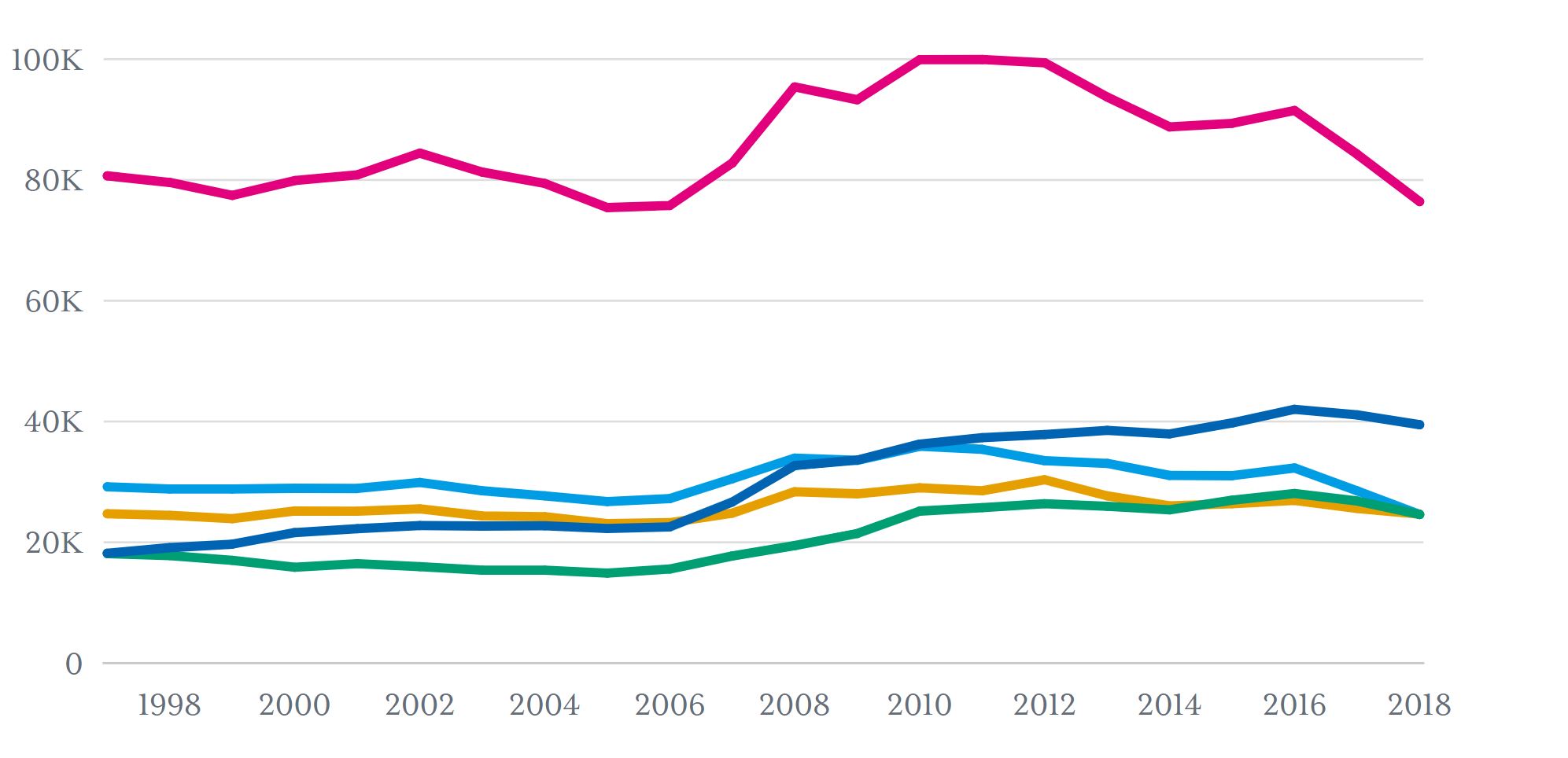Population
Ahead of Supreme Court hearing, here's a look at the data on LGBTQ workplace discrimination cases

Population and demographic data are basic starting points to understanding the economy, politics, and policy today. The new USAFacts Our Changing Population experience makes it easier for people to navigate through the data and understand how the country became what it is today. The feature gives people a look at the nationwide big picture and allows for deeper dives into individual states and counties.
The data shows that the story isn’t the same at national, state, and local levels, and points to trends that can aid in understanding more about the future of the country.
Between 2010 and 2020, the Hispanic population grew more than any other racial or ethnic group, increasing from 50.7 million to 61.3 million. The growth of the Hispanic population accounted for the majority of population growth nationwide. Hispanics are now a larger portion of the population, growing from 16.4% to 18.6%.
In every state, the portion of the Hispanic population grew during the decade. Rhode Island had the sharpest increase, with its portion of the Hispanic population going from 12.5% to 16.7%. In Texas, which gained 2.2 million new Hispanic residents — more than any other state, the percentage of the Hispanic population grew from 37.7% to 39.8%.
The trends are also apparent at the local level. The Hispanic portion of the population increased by more than the national rate in almost half of the fastest growing counties in the country.
Osceola County, Florida, had the highest jump in its portion of the Hispanic population, increasing more than 10 percentage points from 45.7% to 56.0%.
Still, there are exceptions. Among the fastest-growing counties, the Hispanic population share dropped in five: Santa Clara County and Alameda County in California, Fulton County in Georgia, Travis County in Texas, and Denver County in Colorado.
Between 2010 and 2020, the Asian population grew from 14.7 million to 19.4 million. The demographic’s share of the US population also increased by 1.1 percentage points from 4.8% to 5.9%.
The share of the Asian population increased in every state but Hawaii, where Asians are the largest racial or ethnic group. Washington had the largest increase in the share of the Asian population, increasing 2.4 percentage points from 7.2% to 9.6%.
At the local level, the Asian portion of the population grew by more than five percentage points in five of the fastest growing counties, three in California — Santa Clara, Alameda, Orange —Loudoun County in Virginia, and in King County, Washington.
A higher percentage of Americans are 65 and older in 2020 compared with 2010, going from 13.1% to 16.9%. The total number of people 65 and older was about 38% larger than in 2010.
Alaska’s 65 and older population grew at the highest rate of any state, increasing by about 38%. Pennsylvania had the smallest increase for the group, growing by about 25%.
Every state’s population skewed older in 2020 than in 2010. In three New England states — Vermont, Maine, and New Hampshire — the 65 and older population share increased by more than 5.6 percentage points, more than any other state.
The 65+ population more than doubled in 29 US counties, the largest of which is Collin County, Texas. In Sumter County, Florida, the age group’s population share increased from 43.8% in 2010 to 59.1% in 2020, the only 65 and older county in the US.
There are fewer children in the US from 2010 to 2020, with the total number of kids younger than 10 dropping by 1 million. This can be attributed to low birth rates in recent years.
The number of children in the age group dropped in all but 11 states as well as Washington, DC. Texas and Florida were the only states that gained more than 100,000 children. California and Illinois experienced the largest declines, both losing more than 200,000 in the 0 to 9 population.
Explore the demographic changes in your part of the country using Our Changing Population and get the data directly in your inbox by signing up for our newsletter.
Population
Population
Population
Population
Newsletter
Keep up with the latest data and most popular content.


